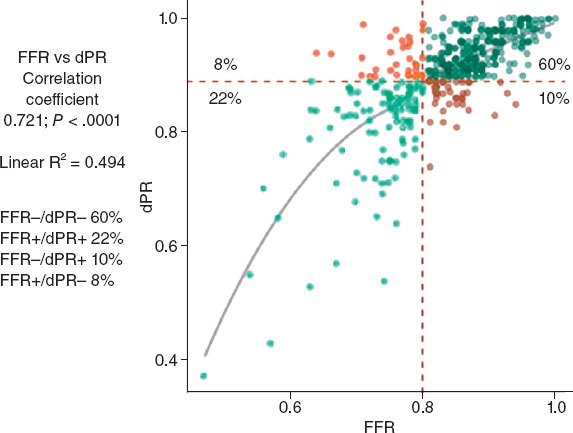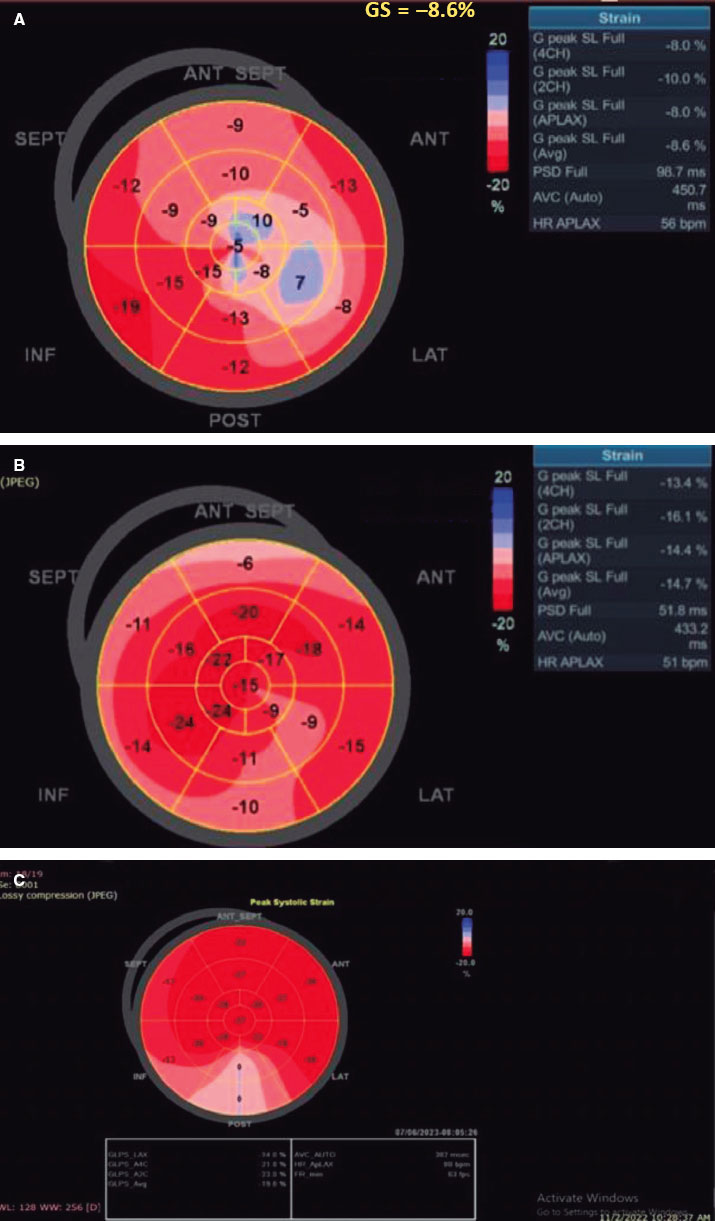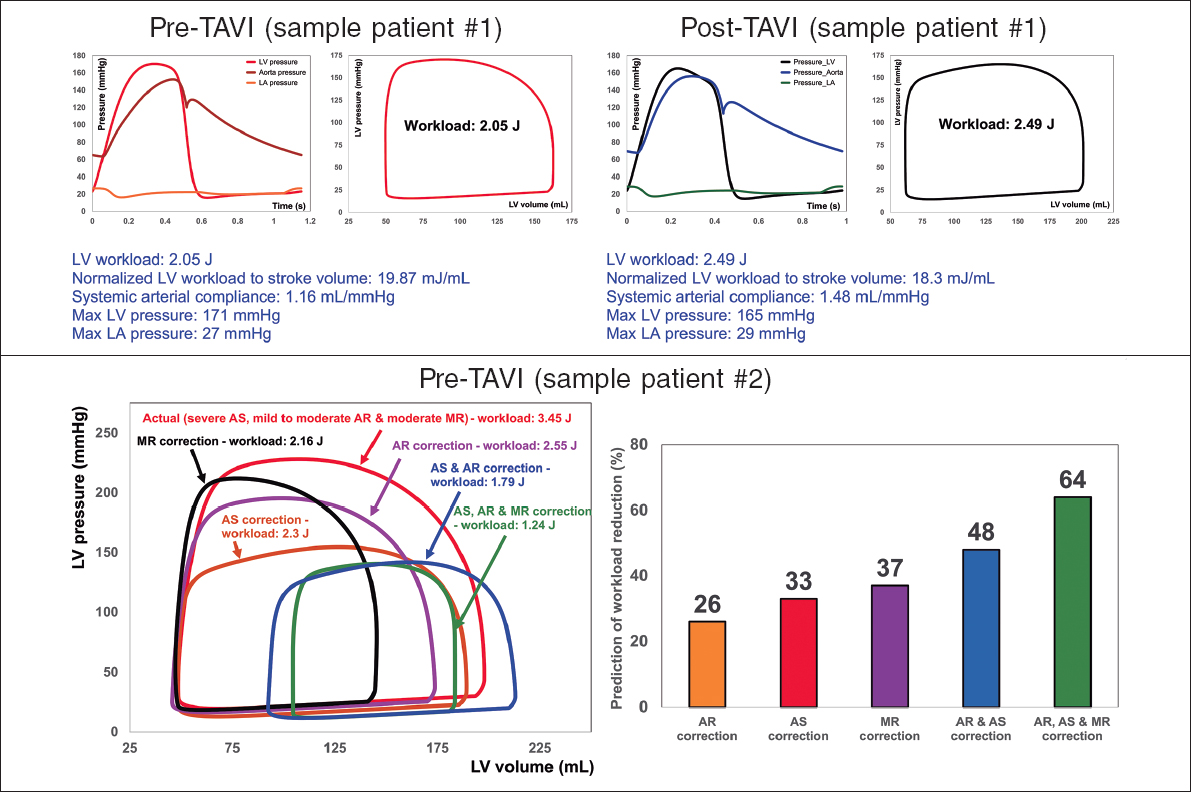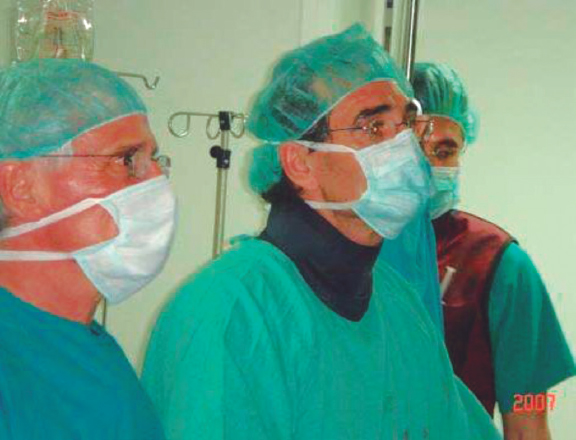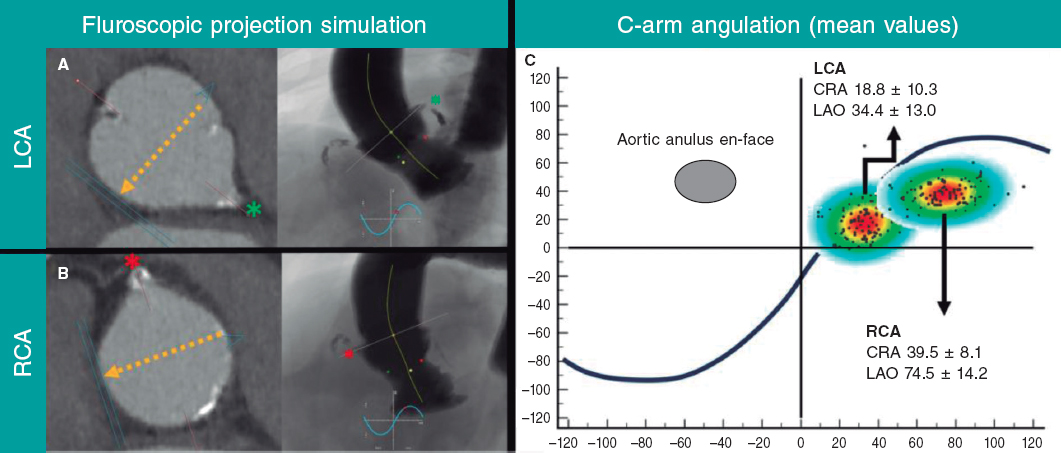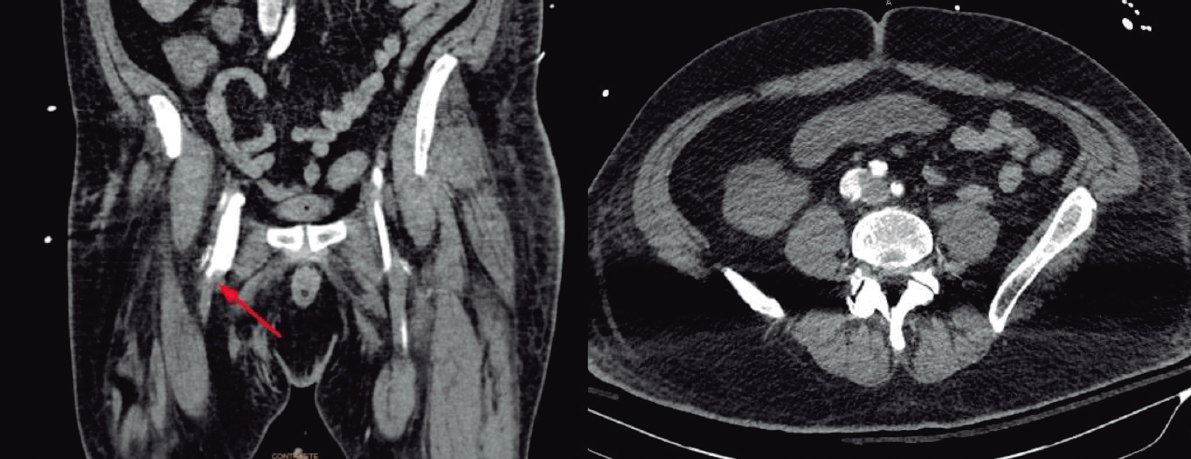ABSTRACT
Antithrombotic therapy following transcatheter aortic valve implantation (TAVI) has evolved empirically with dual antiplatelet therapy (DAPT, aspirin plus clopidogrel) currently recommended in the clinical guidelines. The pilot ARTE trial showed a higher risk of major/life-threatening bleeding events and no reduction of thromboembolic complications with the use of DAPT vs aspirin alone in TAVI recipients. The recently published POPular TAVI trial (NCT02247128) confirmed an increased risk of DAPT (vs. aspirin alone) following TAVI, which was associated with a significant increase in all bleeding events (primary endpoint) and no reduction of ischemic events (stroke, myocardial infarction) or death. Also, DAPT had no effects on the occurrence of clinically apparent valve thrombosis. While ongoing and future studies will have to determine the potential role of anticoagulation (vs antiplatelet) therapy as the antithrombotic treatment of TAVI, the evidence currently available strongly supports the use of single antiplatelet therapy (aspirin) in this setting. Thus, a minimalist approach with aspirin alone should urgently be adopted in the TAVI routine clinical practice and, therefore, implemented in the guidelines.
Keywords: transcatheter aortic valve replacement; antithrombotic therapy; bleeding; stroke.
RESUMEN
El tratamiento antitrombótico tras el implante percutáneo de válvula aórtica (TAVI) ha evolucionado empíricamente, y en la actualidad en las guías clínicas se recomienda el tratamiento antiagregante plaquetario doble (TAPD, ácido acetilsalicílico más clopidogrel). El ensayo piloto ARTE mostró un mayor riesgo de episodios hemorrágicos graves o potencialmente mortales y ninguna disminución de las complicaciones tromboembólicas con el uso de TAPD frente a ácido acetilsalicílico solo en los pacientes receptores de TAVI. El ensayo POPular TAVI recientemente publicado (NCT02247128) ha confirmado los efectos negativos del TAPD (en comparación con el ácido acetilsalicílico solo) tras TAVI, que se asoció con un aumento significativo de todos los eventos hemorrágicos (objetivo principal) y ninguna disminución de los eventos isquémicos (accidente cerebrovascular, infarto de miocardio) ni de las muertes. Además, el TAPD no tuvo ningún efecto sobre la aparición de trombosis valvular clínicamente aparente. Si bien los estudios en curso y futuros determinarán el posible papel de la anticoagulación (frente a la antiagregación plaquetaria) como tratamiento antitrombótico tras TAVI, la evidencia actual apoya firmemente el uso del tratamiento antiagregante plaquetario único (ácido acetilsalicílico) en este contexto. Por lo tanto, en la práctica clínica habitual del TAVI se debe adoptar con urgencia un enfoque minimalista con ácido acetilsalicílico solo, e implementarlo en las guías de práctica clínica.
Palabras clave: Implante percutáneo de válvula aórtica. Tratamiento antitrombótico. Hemorragias. Ictus.
Abbreviations: DAPT: dual antiplatelet therapy. SAPT: single antiplatelet therapy. TAVI: transcatheter aortic valve implantation.
INTRODUCTION
Transcatheter aortic valve implantation (TAVI) has emerged as an alternative to conventional surgical valve replacement to treat elderly patients with severe aortic stenosis.1,2 There have been substantial advances in transcatheter valve technology and periprocedural management of TAVI recipients over the last few years. However, the optimal antithrombotic therapy following TAVI remains to be determined. Back in the 2017, the guidelines of the American Heart Association/American College of Cardiology (AHA/ACC) for the management of patients with valvular heart disease, recommended clopidogrel 75 mg/day for the first 6 months after TAVI plus lifelong aspirin 75-100 mg/day.3 The 2017 ESC guidelines recommended dual antiplatelet therapy (DAPT) for the first 3 months to 6 months after TAVI followed by lifelong single antiplatelet therapy (SAPT) in patients who did not require oral anticoagulation for other reasons.4 However, these recommendations were based on expert opinions and not on clinical evidence on the potential benefits of DAPT in this setting.
The ARTE trial was a pilot randomized study that compared DAPT and SAPT (aspirin) for 3 months following TAVI. The study included 222 patients and the main results showed a lower rate of major/life-threatening bleeding events in the SAPT group without any differences in the occurrence of ischemic events (myocardial infarction, stroke) or mortality at the 3-month follow-up.5 A recent patient-level meta-analysis that included the ARTE trial plus 2 additional smaller randomized trials (a total of 421 patients, 210 and 211 in the DAPT and SAPT groups, respectively) confirmed a higher rate of major/life-threatening bleeding complications at 30 days in the DAPT group (11.4% vs 5.2%; odds ratio = 2.24; 95% confidence interval [95%CI], 1.12-4.46; P = .022) without any differences in the occurrence of stroke events (2.4% in each arm).6 Therefore, there was strong preliminary evidence towards the harmful effects of DAPT in the TAVI setting.
THE POPular TAVI TRIAL
In the recently published POPular TAVI trial (cohort B) a total of 665 patients undergoing TAVI (and without an established indication for long-term anticoagulation therapy) were randomized to receive clopidogrel (a loading dose of 300 mg followed by 75 mg/day for 3 months) plus aspirin (a loading dose of 300 mg followed by 80-10 mg/day, lifelong) vs aspirin alone (SAPT), lifelong.7 The 2 primary endpoints were all hemorrhages (minor, major, and life-threatening or disabling) and non-procedural-related bleeding over a 12-month period. The occurrence of death due to cardiovascular causes or ischemic events (ischemic stroke, myocardial infarction) was considered a secondary endpoint. The mean age and median Society of Thoracic Surgeons (STS) score of the study population were 80 years and 2.5%, respectively. The main results showed fewer bleeding and non-procedural-related bleeding events in the SAPT group (all bleeding, 15.1% vs 26.1%; risk ratio = 0.57; 95%CI, 0.42-0.77; P = .001; non-procedural-related bleeding, 15.1% vs 24.9%; risk ratio = 0.61; 95%CI, 0.44-0.83; P = .005) without any differences between the groups regarding the occurrence of death or ischemic events (SAPT, 9.7%; DAPT, 9.9%; P = .004 for non-inferiority). The rate of ischemic stroke at the 12-month follow-up was similar in the SAPT (5.1%) and the DAPT group (5.4%).
Therefore, the POPular TAVI trial provides definite evidence on the adverse events derived from using DAPT in TAVI patients and urges to change clinical practice and the recommendations established by the guidelines regarding the optimal antithrombotic therapy post-TAVI. The considerations below would be important to put the results of this important trial into context and evaluate future perspectives.
Clinical applicability: from the ARTE to the POPular TAVI trial
It should be considered that a significant percentage of TAVI patients exhibit previous conditions (eg, coronary artery disease requiring coronary stenting and DAPT or atrial fibrillation requiring anticoagulation) that would preclude the use of SAPT as the only antithrombotic treatment after the procedure. Unfortunately, the authors of the POPular TAVI trial failed to provide data on the overall number of patients screened and finally excluded from the study. However, based on data from large TAVI registries,8 the percentage of ineligible patients would be close to 50% in the moderate-to-high risk cohort. Also, the rate of new-onset atrial fibrillation following TAVI is around 10%.9 As a matter of fact, the occurrence of such complication required a change of the antithrombotic strategy (anticoagulation started) in ~11% of the patients included in the ARTE and POPular TAVI clinical trials. On the other hand, the patients included in the ARTE trial exhibited moderate-to-high surgical risk (mean STS score, 6.3% ± 4.5%) and a high percentage of patients (~30%) underwent TAVI via non-transfemoral approach.5 However, most of the patients included in the POPular TAVI trial were patients of low surgical risk, and a non-transfemoral approach was used in a minority of the them (~10%). This means that the adverse events of DAPT in TAVI recipients would apply to the entire spectrum of surgical risk patients regardless of the approach used for the TAVI procedure.
Bleeding complications following TAVI
Bleeding events remain as 1 of the most common complications of TAVI, and have been associated with worse outcomes.10, 11 The elderly are often candidates for TAVI and they usually show comorbidities like frailty, renal impairment, anemia or hypertension that elevate the risk of bleeding events.8,10,11 Also, the use multiple arterial accesses (particularly transfemoral) and large bore catheters during TAVI procedures also contributes to the occurrence of vascular and bleeding complications in this high-risk population.12,13 Finally, the combination of clopidogrel plus aspirin has already been associated with a higher risk of bleeding events outside the TAVI setting.14-16 Also, the POPular TAVI trial confirmed that the higher risk of bleeding complications (including major/life-threatening bleeding) was even more important in TAVI patients. As expected, in the ARTE and POPular TAVI trials, most bleeding complications were due to vascular/access site complications. However, a large number of complications were bleeding events not associated with the access site (42% of bleeding events in the ARTE trial were associated with subacute gastrointestinal bleeding within the weeks following the procedure, all of them in the DAPT group). Thus, although further reductions in the size of the catheter and improvements in vascular hemostasis could partially compensate the adverse events of DAPT, the higher bleeding risk would still persist beyond the periprocedural period.
Stroke
The reason for prescribing DAPT to TAVI patients was to prevent ischemic events, particularly stroke, in their acute phase and within the weeks following the procedure. However, the results of a patient-level meta-analysis (prior to the POPular TAVI trial) and the POPULAR TAVI trial showed similar rates of ischemic stroke in both the SAPT and the DAPT groups.6,7 Although none of these studies was powered to detect inter-group differences regarding ischemic events, no favorable tendency was seen associated with the use of DAPT after including about 1000 patients in randomized trials (DAPT vs SAPT). This made the hypothesis of a possible benefit of DAPT to treat cerebrovascular ischemic events in this setting highly unlikely.
The pathophysiology of cerebrovascular events post-TAVI may partially explain the lack of efficacy of DAPT in this context. Most ischemic stroke events post-TAVI occur within the week following the procedure (over half of them occur immediately after the procedure or within the next 24 hours),17,18 and seem to be due to the mechanical interaction between the transcatheter valve system and the aorta and the diseased native valve with embolization of multiple debris (calcified material, thrombus, atheromatous debris) during the manipulation of the guidewire and the catheter.19,20 Also, when considering the occurrence of cerebrovascular events within the first 24 hours following the procedure, a significant percentage of events seem to be associated with the occurrence of atrial arrhythmias,17,21 against which DAPT has a very limited efficacy. Overall, the pathophysiology of acute and subacute post-TAVI stroke seems to escape the mechanism of action of antiplatelet therapy with thienopyridines.
Valve thrombosis
There have been some concerns about bioprosthetic valve thrombosis within the weeks/months following TAVI. However, the occurrence of clinically relevant valve thrombosis is a rare event (rate < 1%) that does not seem to be influenced by the presence thienopyridine therapy either.22,23 The POPular TAVI trial confirmed both the very low rate (< 1%) of clinically apparent valve thrombosis and the lack of DAPT effect regarding the prevention of this complication.
More recently, the occurrence of subclinical valve thrombosis post-TAVI has been gaining interest.24 This occurs to between 10% and 15% of TAVI recipients and may be prevented by anticoagulation therapy but not DAPT.25
Anticoagulation vs antiplatelet therapy following TAVI
After establishing the lack of any beneficial effect of DAPT in TAVI recipients, one may wonder whether anticoagulation therapy (vs SAPT) would have a role in this setting. As a matter of fact, the use of short-term anticoagulation therapy (3 months) is suggested by the current AHA/ACC and European Society of Cardiology (ESC) clinical guidelines following surgical aortic valve replacement (IIb and IIa recommendation, respectively).3,4 Some studies using continuous ECG monitoring post-TAVI have shown a high rate (close to 20%) of silent episodes of atrial fibrillation within the weeks/months following the procedure.26 The administration of anticoagulation therapy would potentially be more effective to prevent thromboembolic events in such patients. Interestingly, Muntané-Carol et al.27 recently showed a higher risk of post-TAVI late strokes (> 1 month) in patients who don’t receive anticoagulation therapy, suggesting the potential benefit of such a strategy. Additionally, recent data showed the role of anticoagulation therapy to prevent subclinical valve thrombosis as seen on the 4D computed tomography scan.25,28 Therefore, there would be a mechanistic basis supporting a potential role for anticoagulation therapy in this context. However, the clinical consequences of subclinical valve thrombosis remain to be seen, and the potential clinical benefits of anticoagulation may be counterbalanced by a higher risk of bleeding events compared to SAPT.
The GALILEO clinical trial compared a strategy of systematic anticoagulation post-TAVI (rivaroxaban 10 mg/day plus aspirin for the first 3 months) to prevent death or thromboembolic events.29 However, the trial ended prematurely due to safety concerns and the results showed a higher risk of death/thromboembolic events and a higher rate of major/life-threatening bleeding with the use of rivaroxaban. The ongoing ATLANTIS clinical trial (Anti-Thrombotic Strategy After Trans-aortic Valve Implantation for Aortic Stenosis; NCT02664649), a 3-arm study that compared apixaban versus DAPT versus SAPT (aspirin) in patients with no clinical indication for anticoagulation, should shed some light (probably definitely) on the actual role of anticoagulation therapy in TAVI recipients.30
CONCLUSIONS
In conclusion, the POPular TAVI trial confirmed the harmful effects of DAPT (vs SAPT) following TAVI and stood as a major step forward when it comes to determining the optimal antithrombotic strategy in this context. Future studies will assess whether systematic anticoagulation (together with its duration, short-term?) may be superior to SAPT regarding better outcomes. Of note, clinical events (including bleeding complications), and not subclinical imaging features, should ideally drive the clinical decision-making process regarding the antithrombotic strategy following TAVI. Meanwhile, a minimalist approach with aspirin alone should urgently be adopted in the TAVI routine clinical practice and implemented in the guidelines.
CONFLICTS OF INTEREST
J. Rodés-Cabau declared he had received institutional research grants from Edwards Lifesciences, Medtronic, and Boston Scientific.
ACKNOWLEDGMENTS
J. Rodés-Cabau holds the Research Chair “Fondation Famille Jacques Larivière” for the Development of Structural Heart Disease Interventions (Laval University, Quebec City, Canada).
REFERENCES
1. Puri R, Chamandi C, Rodriguez-Gabella T, Rodes-Cabau J. Future of transcatheter aortic valve implantation - Evolving clinical implications. Nat Rev Cardiol. 2018;15:57-65.
2. Kolte D, Vlahakes GJ, Palacios IF, et al. Transcatheter Versus Surgical Aortic Valve Replacement in Low-Risk Patients. J Am Coll Cardiol. 2019;74:1532-1540.
3. Nishimura RA, Otto CM, Bonow RO, et al. 2017 AHA/ACC Focused Update of the 2014 AHA/ACC Guideline for the Management of Patients With Valvular Heart Disease:A Report of the American College of Cardiology/American Heart Association Task Force on Clinical Practice Guidelines. J Am Coll Cardiol. 2017;70:252-289.
4. Baumgartner H, Falk V, Bax JJ, et al. 2017 ESC/EACTS Guidelines for the management of valvular heart disease. Eur Heart J. 2017;38:2739-2791.
5. Rodes-Cabau J, Masson JB, Welsh RC, et al. Aspirin Versus Aspirin Plus Clopidogrel as Antithrombotic Treatment Following Transcatheter Aortic Valve Replacement With a Balloon-Expandable Valve:The ARTE (Aspirin Versus Aspirin +Clopidogrel Following Transcatheter Aortic Valve Implantation) Randomized Clinical Trial. JACC Cardiovasc Interv. 2017;10:1357-1365.
6. Maes F, Stabile E, Ussia GP, et al. Meta-Analysis Comparing Single Versus Dual Antiplatelet Therapy Following Transcatheter Aortic Valve Implantation. Am J Cardiol. 2018;122:310-315.
7. Brouwer J, Nijenhuis R, Delewi RS, et al. Aspirin with or without clopidogrel after transcatheter aortic-valve implantation. N Engl J Med 2020. https://doi.org/10.1056/NEJMoa2017815.
8. Holmes DR, Brennan JM, Rumsfeld JS, et al. Clinical outcomes at 1 year following transcatheter aortic valve replacement. JAMA 2015;313:1019-1028.
9. Mok M, Urena M, Nombela-Franco L, et al. Clinical and prognostic implications of existing and new-onset atrial fibrillation in patients undergoing transcatheter aortic valve implantation. J Thromb Thrombolysis. 2013;35:450-455.
10. Genereux P, Head SJ, Van Mieghem NM, et al. Clinical outcomes after transcatheter aortic valve replacement using valve academic research consortium definitions:a weighted meta-analysis of 3,519 patients from 16 studies. J Am Coll Cardiol. 2012;59:2317-2326.
11. Rodes-Cabau J, Dauerman HL, Cohen MG, et al. Antithrombotic treatment in transcatheter aortic valve implantation:insights for cerebrovascular and bleeding events. J Am Coll Cardiol. 2013;62:2349-2359.
12. Redfors B, Watson BM, McAndrew T, et al. Mortality, Length of Stay, and Cost Implications of Procedural Bleeding After Percutaneous Interventions Using Large-Bore Catheters. JAMA Cardiol. 2017;2:798-802.
13. Junquera L, Urena M, Latib A, et al. Comparison of Transfemoral Versus Transradial Secondary Access in Transcatheter Aortic Valve Replacement. Circ Cardiovasc Interv. 2020;13:e00↡.
14. Shehab N, Sperling LS, Kegler SR, Budnitz DS. National estimates of emergency department visits for hemorrhage-related adverse events from clopidogrel plus aspirin and from warfarin. Arch Intern Med. 2010;170:1926-1933.
15. Delaney JA, Opatrny L, Brophy JM, Suissa S. Drug drug interactions between antithrombotic medications and the risk of gastrointestinal bleeding. CMAJ. 2007;177:347-351.
16. Miyazaki Y, Suwannasom P, Sotomi Y, et al. Single or dual antiplatelet therapy after PCI. Nat Rev Cardiol. 2017;14:294-303.
17. Nombela-Franco L, Webb JG, de Jaegere PP, et al. Timing, predictive factors, and prognostic value of cerebrovascular events in a large cohort of patients undergoing transcatheter aortic valve implantation. Circulation. 2012;126:3041-3053.
18. Miller DC, Blackstone EH, Mack MJ, et al. Transcatheter (TAVR) versus surgical (AVR) aortic valve replacement:occurrence, hazard, risk factors, and consequences of neurologic events in the PARTNER trial. J Thorac Cardiovasc Surg. 2012;143:832-843.e813.
19. Van Mieghem NM, Schipper ME, Ladich E, et al. Histopathology of embolic debris captured during transcatheter aortic valve replacement. Circulation. 2013;127:2194-2201.
20. Kahlert P, Al-Rashid F, Dottger P, et al. Cerebral embolization during transcatheter aortic valve implantation:a transcranial Doppler study. Circulation. 2012;126:1245-1255.
21. Auffret V, Regueiro A, Del Trigo M, et al. Predictors of Early Cerebrovascular Events in Patients With Aortic Stenosis Undergoing Transcatheter Aortic Valve Replacement. J Am Coll Cardiol. 2016;68:673-684.
22. Cordoba-Soriano JG, Puri R, Amat-Santos I, et al. Valve thrombosis following transcatheter aortic valve implantation:a systematic review. Rev Esp Cardiol. 2015;68:198-204.
23. Latib A, Naganuma T, Abdel-Wahab M, et al. Treatment and clinical outcomes of transcatheter heart valve thrombosis. Circ Cardiovasc Interv. 2015;8:e001779.
24. Puri R, Auffret V, Rodes-Cabau J. Bioprosthetic Valve Thrombosis. J Am Coll Cardiol. 2017;69:2193-2211.
25. Chakravarty T, Sondergaard L, Friedman J, et al.;RESOLVE and SAVORY Investigators. Subclinical leaflet thrombosis in surgical and transcatheter bioprosthetic aortic valves:an observational study. Lancet. 2017;389:2383-2392.
26. Rodés-Cabau J, Urena M, Nombela-Franco L, et al. Arrhythmic Burden as Determined by Ambulatory Continuous Cardiac Monitoring in Patients With New-Onset Persistent Left Bundle Branch Block Following Transcatheter Aortic Valve Replacement:The MARE Study. JACC Cardiovasc Interv. 2018;11:1495-1505.
27. Muntané-Carol G, Urena M, Munoz-Garcia A, et al. Late Cerebrovascular Events Following Transcatheter Aortic Valve Replacement. JACC Cardiovasc Interv. 2020;13:872-881.
28. De Backer O, Dangas GD, Jilaihawi H, et al. Reduced Leaflet Motion after Transcatheter Aortic-Valve Replacement. N Engl J Med. 2020;382:130-139.
29. Dangas GD, Tijssen JGP, Wöhrle J, et al. A Controlled Trial of Rivaroxaban after Transcatheter Aortic-Valve Replacement. N Engl J Med. 2020;382:120-129.
30. Collet JP, Berti S, Cequier A, et al. Oral anti-Xa anticoagulation after trans-aortic valve implantation for aortic stenosis:The randomized ATLANTIS trial. Am Heart J. 2018;200:44-50.
Corresponding author: Quebec Heart and Lung Institute, Laval University, 2725 Ch Ste-Foy, G1V4G5 Quebec City, Quebec, Canada.
E-mail address: josep.rodes@criucpq.ulaval.ca (J. Rodés-Cabau).


